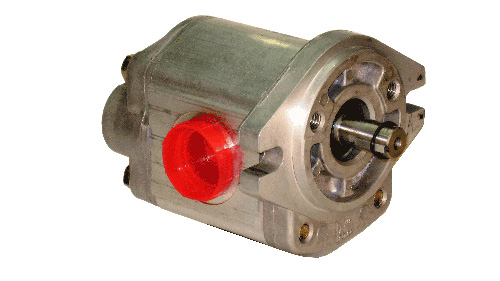
It seems like such a basic question to ask, but unfortunately, many who even work in this industry do not know the function of a hydraulic pump. When I was first taught about the function of a hydraulic pump, I was told its only job was to provide flow. I was also told that any pressure in a hydraulic system was a result of resistance to that flow. However, these claims are both wrong. So, what is a hydraulic pump?
A hydraulic pump converts the mechanical energy from the prime mover into hydraulic energy for use by the system. Hydraulic energy is the combination of pressure and flow required by the actuators to perform useful work. It is important to understand that hydraulic energy is both pressure and flow combined, because one without the other cannot achieve work. Pressure would just consist of trapped fluid and flow would have no energy to move fluid alone.
A hydraulic pump pushes on fluid, and in this regard, fluid can be considered a solid as it is transmitted throughout the machine and then pushes on actuators to eventually move loads. Motion control professionals will have me point out that oil is compressible, but that’s a discussion for another blog. The point is that a pump could be pushing on sand, ball bearings or any other solid medium capable of taking the shape of its container, and the result would still be the transmission of force.
Transmission of force is really the name of the game with hydraulics, and is the basis for Cosford’s Law, which states that “pressure makes it go, flow is just the rate in which you can create pressure.” For fluid to be moving, pressure must absolutely be highest at the pump; always. This flies in the face of the fallacy that pressure is resistance to flow. Pressure will rise as high as it needs to be to overcome downstream resistance, but if it didn’t start at the pump, fluid would move backwards.
Pressure in hydraulics is the result of Newton’s Third Law of Motion, that every action has an equal and opposite reaction. The opposing force can be a loaded cylinder or a flow control, and the pump doesn’t care which. It will continue to push the fluid as pressure rises to overcome resistance, even if it results in something blowing up or the prime mover being overloaded.
Flow from a pump is a function of displacement (volume) and speed. A larger pump can push more fluid at once, or by spinning a pump faster, it will push on fluid more often. Just like in the world of electrons, where power is a combination of voltage and amperage, power in hydraulics is a combination of pressure and flow. By doubling pressure while leaving flow the same, horsepower is doubled. Also, by doubling flow while leaving pressure the same, horsepower is also doubled.
Understanding the operation of a hydraulic pump will do volumes (no pun intended) for your understanding of fluid power. When you realize all energy starts at the pump, you can better design or troubleshoot any system.


Thanks for the information, Josh. A few days ago, I heard someone talking about hydraulic pumps and they sound really interesting, so I wanted to learn more about how they work. It is really cool that a fluid is basically “a solid as it is transmitted throughout the machine.” I am looking forward to learning more about how fluids can be used for power with the right kind of equipment.